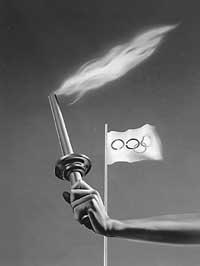Doping: medical or legal problem
1996/02/01 Irazusta, Jon Iturria: Elhuyar aldizkaria
Nowadays sports have become very important and in recent years this way of increasing metabolism has spread. Experts assure that it is good for physical and psychic health, so we put on the sneakers and put ourselves to everything.
However, the topic I'm going to address today is not at least about this type of sport (even if you see more cases than you want), but about sport as a profession. For them, because of the equality between high level athletes, illegality can bring better results. However, this problem is not today in the morning, since the Romans also used horses to improve their performance, since they gave them substances.
Governments, companies and ourselves, we demand results from high-level athletes every time they participate and if one day they fail, it is indifferent to be injured or injured, we forget those we once praised. Consequently, leading athletes often seek pharmacological aids. These grants can be legalized, illegal or intermediate.

Before moving forward, I consider it necessary to define doping. A substance (or method) is considered doping when:
- Whether the substance has been given in strange or abnormal form or dose to humans,
- interim performance improvement and
- harmful to health.
The last condition is, in my opinion, the one with the most incidences when forming a list of prohibited substances. Because it is really difficult to determine what is harmful, especially if you want to look long-term. The consequences of many substances are unknown, since there have been no thorough studies of them and, in addition, many of the studies carried out have provided contradictory data.
It should be noted that high-level sport cannot be considered healthy. That is, training would often meet the three conditions of doping. The problem is complicated when the use of amino acid mixtures, Ginseng drugs and substances such as creatine or carnitine has spread. These are not among the prohibited substances and clearly meet the first two requirements, but there has been no consistent examination of whether they are harmful or not.
So things, the morale of the fans and the authorities is often double. On the one hand, they ask for or demand results and, on the other, if anyone uses the methods they use to deal with diseases, an athlete tells them that they have committed fraud and punishes them. On the other hand, we must remember that in order to make life more cheerful, calm or awake, we often drink coffee, exciting, alcohol, etc.
However, I don't want to understand that I'm in favour of eliminating doping controls. In the case of admitting the use of pharmacological aids, I believe they should be administered under medical control. Otherwise, you can reach the other extreme and the athlete, with the aim of winning the competition, could take any medicine without considering sudden death. Doping control is a means of not reaching this limit. Its inclusion in the list of prohibited substances constitutes its illegality and is sometimes independent of its medical evaluation. For example, some drugs used to cure the flu would give positive doping control. Therefore, we can often consider doping as a legal problem and not as a biomedical problem.
The list of prohibited substances has improved in recent years, allowing in some cases therapeutic doses. In the coming years, the list of prohibited substances and some drugs administered under medical control should have a special treatment among sports doctors.

Gai honi buruzko eduki gehiago
Elhuyarrek garatutako teknologia






